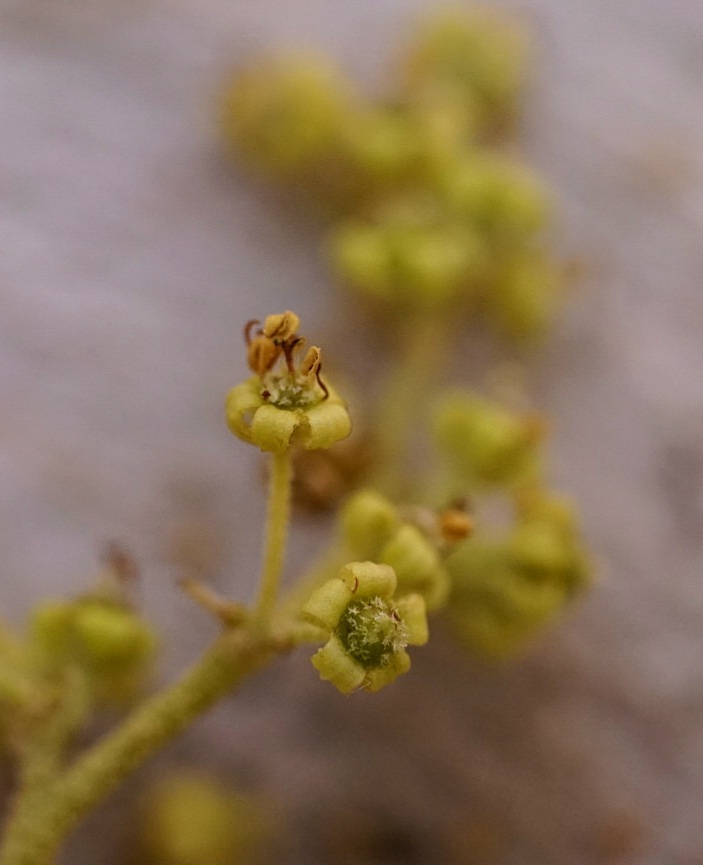Pomaderris apetala subsp. apetala
Shrub or tree 2–15 m high; branchlets greyish (rarely rusty) stellate-pubescent. Leaves narrow-ovate or ovate, mostly 40–110 mm long, 20–30 mm wide, acute (rarely obtuse), finally glabrous above, or occasionally sparsely stellate-pubescent, smooth or wrinkled, secondary (and usually tertiary) veins apparent, lower surface greyish with dense sessile stellate hairs; margins minutely serrate; stipules 4–8 mm long, deciduous. Inflorescence paniculate, c. pyramidal, 5–25 cm long, 3–13 cm wide; bracts deciduous. Flowers cream or greenish, externally densely stellate-pubescent; pedicels 1–5 mm long; hypanthium c. 1 mm long; sepals 1.5–2 mm long, persistent; petals absent; ovary virtually inferior, the summit stellate-pubescent, style branched in middle third. Operculum membranous, occupying most of inner face, or indistinct and mericarp dehiscing via a ventral or marginal slit. Flowers Oct.–Nov.
GGr, HSF. Also Tas. Naturalized New Zealand. Common in moist to wet forests of the Grampians, habitats that are occupied elsewhere in the state by P. aspera (which is apparently absent from the Grampians).
Walsh, N.G. (1999). Pomaderris. In: Walsh, N.G.; Entwisle, T.J., Flora of Victoria Vol. 4, Cornaceae to Asteraceae, pp. 85–109. Inkata Press, Melbourne.
 Spinning
Spinning
